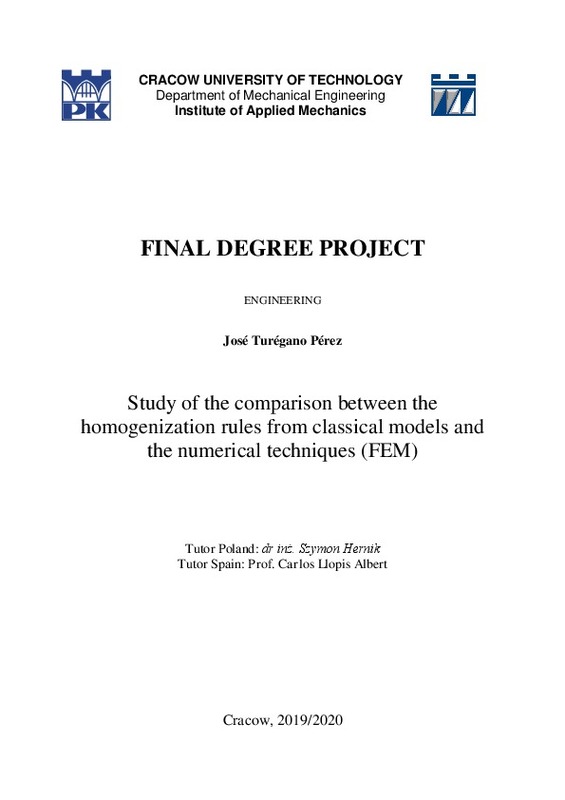JavaScript is disabled for your browser. Some features of this site may not work without it.
Buscar en RiuNet
Listar
Mi cuenta
Estadísticas
Ayuda RiuNet
Admin. UPV
Estudio de la comparación entre las reglas de homogeneización de modelos clásicos y las técnicas numéricas (FEM)
Mostrar el registro completo del ítem
Turégano Pérez, J. (2020). Estudio de la comparación entre las reglas de homogeneización de modelos clásicos y las técnicas numéricas (FEM). http://hdl.handle.net/10251/156592
Por favor, use este identificador para citar o enlazar este ítem: http://hdl.handle.net/10251/156592
Ficheros en el ítem
Metadatos del ítem
| Título: | Estudio de la comparación entre las reglas de homogeneización de modelos clásicos y las técnicas numéricas (FEM) | |||
| Autor: | Turégano Pérez, José | |||
| Director(es): | Hernik, Szymon | |||
| Entidad UPV: |
|
|||
| Fecha acto/lectura: |
|
|||
| Resumen: |
[EN] The analysis of structural behaviour of materials is topic that has developed through time, but nowadays it has taken more relevance with the need of new materials with better qualities to comply the advance of new ...[+]
[ES] El proyecto consiste en la comparación entre los resultados obtenidos con los modelos clásicos de homogeneización y la herramienta de Ansys, Material Designer. La comparación se realizará con una viga metálica reforzada ...[+]
|
|||
| Palabras clave: |
|
|||
| Derechos de uso: | Reserva de todos los derechos | |||
| Editorial: |
|
|||
| Titulación: |
|
|||
| Tipo: |
|
recommendations
Este ítem aparece en la(s) siguiente(s) colección(ones)
-
ETSII - Trabajos académicos [10484]
Escuela Técnica Superior de Ingenieros Industriales







